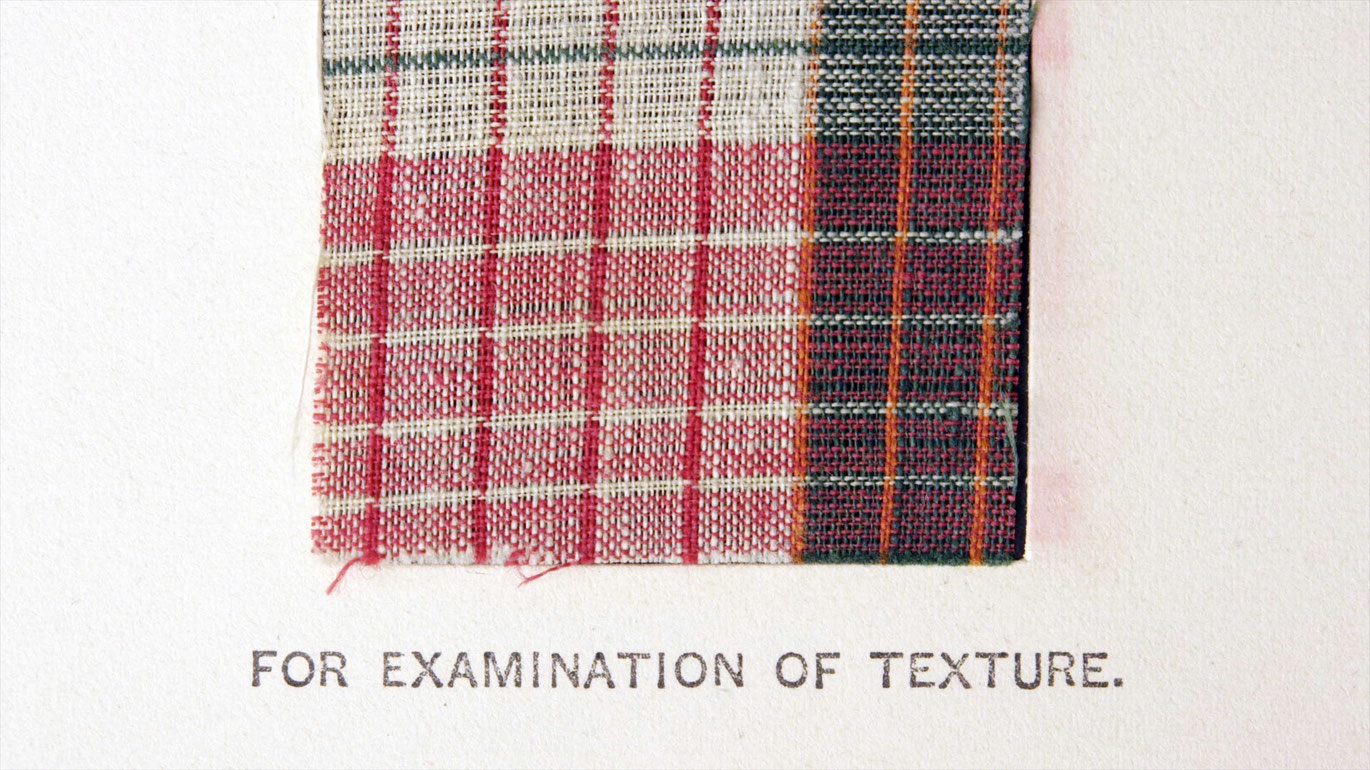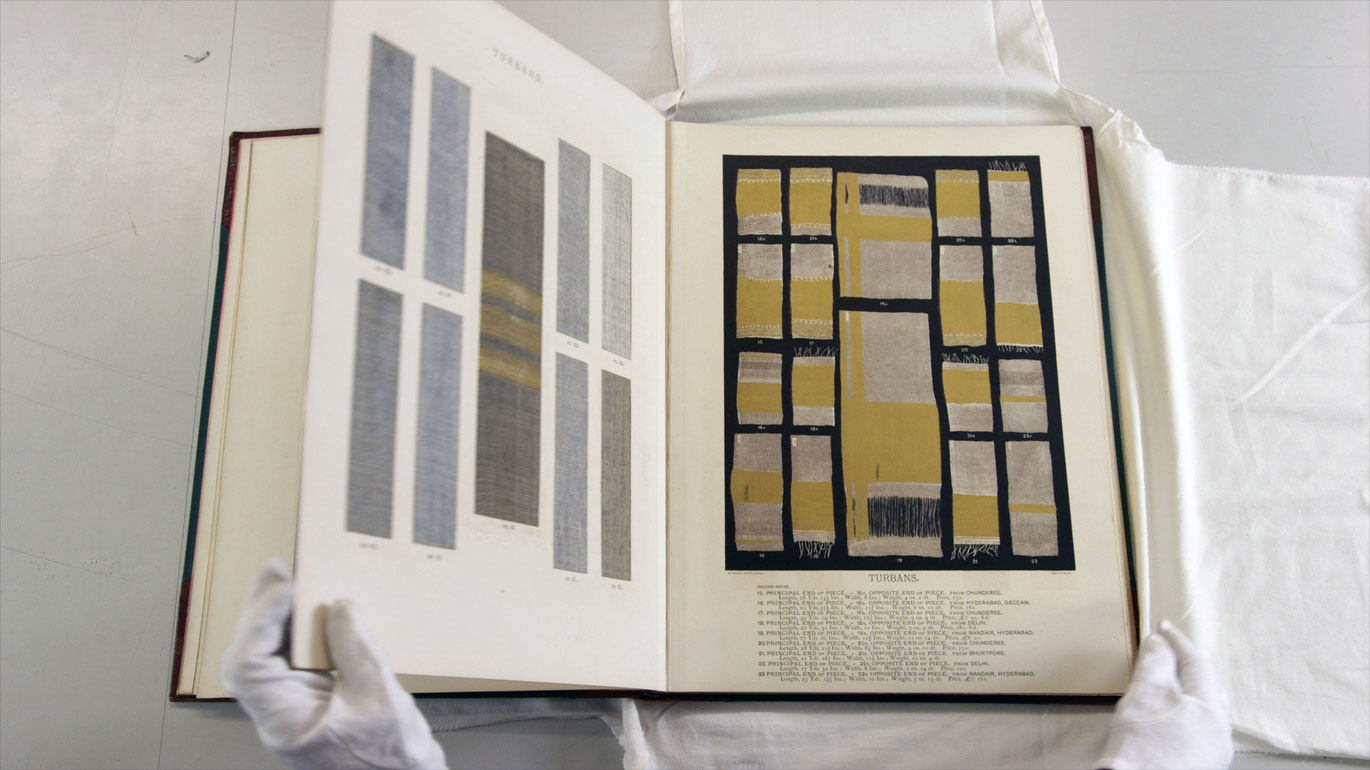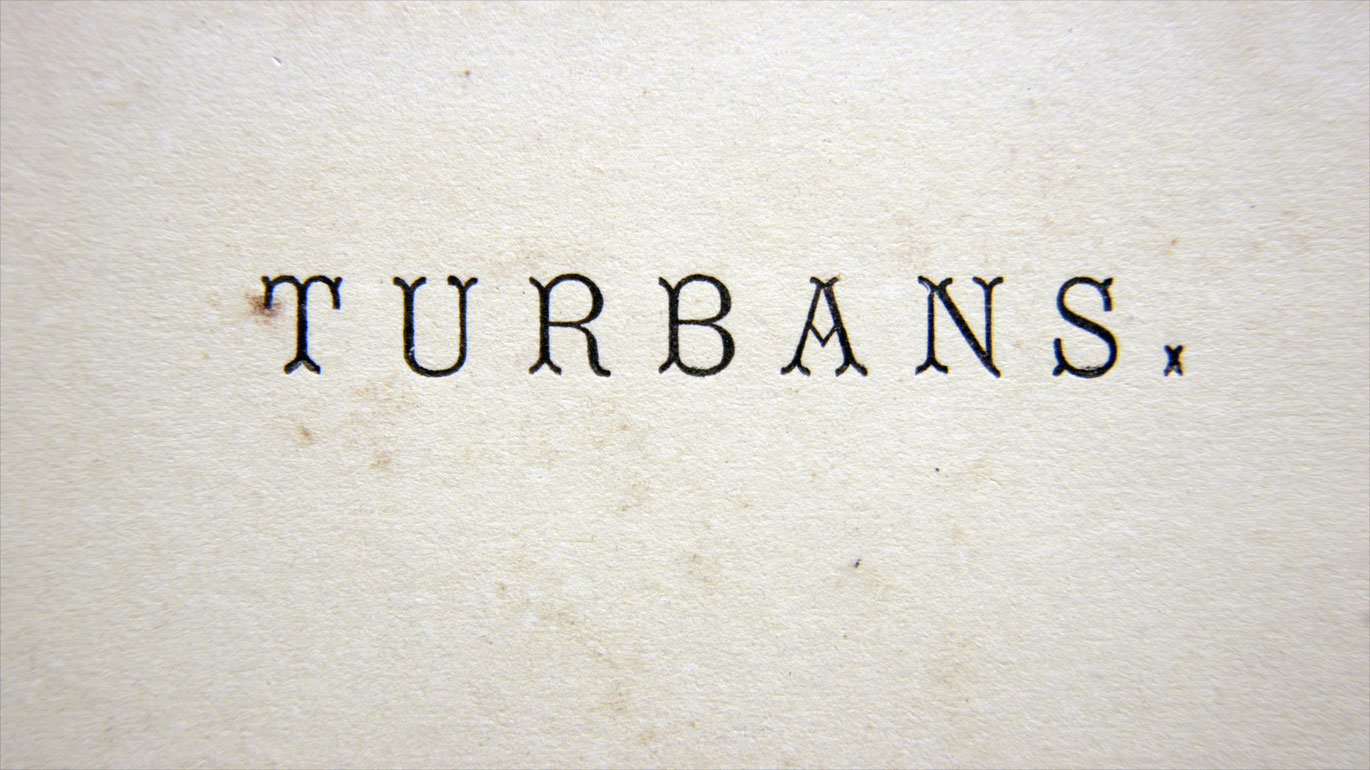Patterns of the Conquerors
In her short film Patterns of the Conquerors, artist Sascha Reichstein leafs through the folios of an extensive collection of fabrics. It was compiled by John Forbes Watson, "Reporter on the Products of India", and published in 1866 under the title The Collections of the Textile Manufactures of India. Watson wanted to draw the attention of British textile manufacturers to the wide array of Indian fabric design, with the ulterior economic motive of industrially producing inexpensive Indian textile imitations in England that would subsequently be (re-)exported to the British colony.
According to one of three design experts heard off-screen, the collection is reminiscent of an herbarium. Meanwhile, the camera operated by Martin Putz glides in slow vertical and horizontal sweeps over pieces of fabric. The distance the camera maintains to the material is vital. Sometimes the lens seeks intimate proximity to the surfaces of the fabric samples that reveals how their differently dense woven structures resemble tiny organic landscapes. Searching camera movements follow the course of the patterns and bring filigree threads into focus that reach out of the fabric like tiny insect feelers. Static close-ups alternate with gliding camera perspectives as the camera produces haptic images that appeal to our sense of touch. Some of the breathtaking fabric patterns take up the entire image; in other shots Reichstein shows only fragments of designs together with their labels. In so doing, she brings the collector´s system of order into the picture, whose textile taxonomy aimed to convey the wide range of fabric patterns as manageable and capable of imitation.
Towards the end the camera pulls back for the first time to reveal an unimpeded view of the entire book. It lays on the table closed and wrapped in white fabric, the distance depriving us of our tactile perspective. Through this tension between tactile proximity and optical distance, Sascha Reichstein ingeniously unfolds the tension between the material abundance of the fabric and its (post-)colonial domination. (Alexandra Seibel)
Translation: Eve Heller
This film deals with the visual stimulus of the diverse, inspiring textiles of the albums of “The Textile Manufactures of India” from 1860. It is a trip into colonial time and the history and politics regarding these textiles. (Viennale 2017)
Patterns of the Conquerors
2017
Austria, United Kingdom
21 min



